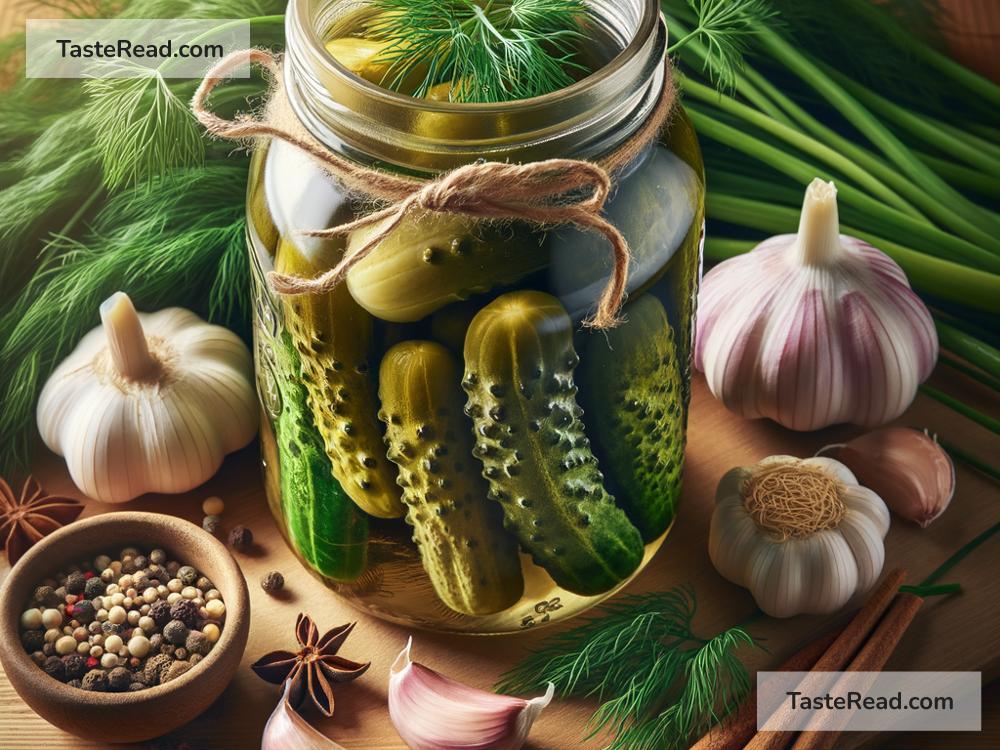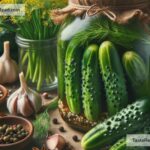Why Dill Is Used in Pickles: A Simple Explanation
Pickles are a widely loved food all over the world. These tangy, crunchy snacks are often enjoyed as a side dish, a topping for burgers and sandwiches, or even just on their own. While pickles can be made with various vegetables, cucumbers are the most popular choice. But have you ever wondered why dill—a feathery green herb with a unique flavor—is typically used when making pickles? In this blog post, we’ll explore why dill plays such an important role in pickling and why its flavor is the perfect match for this preserved treat.
What Are Pickles?
Before diving into the role of dill in pickles, let’s quickly discuss what pickles are. Pickles are vegetables (most commonly cucumbers) that are preserved in a solution called brine. Brine is usually made with water, vinegar, salt, and sometimes sugar, along with various spices and herbs. The pickling process extends the shelf life of the vegetables and gives them a tangy flavor. Over time, chefs and home cooks have experimented with different seasonings to make pickles even more delicious, and dill has emerged as one of the most popular ingredients.
What Is Dill?
Dill is an herb that belongs to the celery family. It has delicate, thread-like leaves and a sharp, aromatic flavor. Dill has been used for centuries in cooking and traditional medicine. Native to regions like the Mediterranean and Southern Russia, dill is now grown worldwide and is added to many dishes for its distinct taste. Fresh dill leaves and seeds are both commonly used in recipes, but when it comes to pickles, fresh dill or dill seeds are preferred.
Why Is Dill Used in Pickles?
There are several reasons why dill is such a popular choice for pickles, and each one contributes to the fantastic flavor and signature style of dill pickles.
1. Dill’s Flavor Complements Pickles
The primary reason dill is used in pickles is because of its flavor. Dill has a fresh, slightly sweet, and citrusy taste with subtle hints of anise and grass. This unique combination perfectly balances the tartness and saltiness of pickled cucumbers. Vinegar-based brine can be overpowering on its own, but dill adds a refreshing touch that enhances the overall flavor profile. The result is a pickle that’s tangy, savory, and aromatic—all thanks to dill.
2. Traditional Roots
Dill pickles have been made for centuries, and the herb has a long-standing association with pickling. Historically, dill was used in Eastern Europe to flavor preserved vegetables. It was especially popular in Jewish communities, where dill pickles became a staple food item. Recipes for dill pickles eventually spread worldwide, making them an iconic part of different cuisines. Today, when most people think of pickles, they automatically think of dill pickles.
3. Preservation Benefits
Dill isn’t just included in pickles for flavor—it also has practical benefits. Dill contains essential oils with antimicrobial properties. Though these natural compounds don’t replace vinegar and salt in preserving cucumbers, they can help boost the pickles’ freshness and quality. In ancient times, before refrigeration was widely available, dill may have helped keep pickled vegetables safe to eat for longer periods.
4. Aromatic Appeal
When you open a jar of dill pickles, the herb’s aroma hits you immediately. Dill’s smell is part of the reason why people find dill pickles so appetizing. The scent is fresh and inviting, and it’s closely tied to the taste of the pickles themselves. Without dill, pickles wouldn’t have the same mouthwatering experience that many people adore.
5. Versatility
Dill works well with a wide range of ingredients used in pickle recipes. Its herbaceous flavor pairs effortlessly with other common spices like garlic, mustard seeds, black peppercorns, and bay leaves. This versatility allows dill to shine alongside other seasonings without overpowering or competing with them.
How Does Dill Change the Pickling Process?
Dill is usually added to pickles either as whole sprigs, chopped leaves, or seeds. Fresh dill provides a brighter flavor, while dill seeds offer a slightly stronger, earthier taste. In both cases, the dill infuses the brine as the pickles soak, which means the cucumbers absorb the herb’s flavor over time.
Dill isn’t just added during the pickling process; it also remains visible in the jar. Having sprigs or pieces of dill floating in the brine is part of the charm of dill pickles and makes them instantly recognizable.
The Legacy of Dill Pickles
Dill pickles have grown beyond their roots in Eastern European cuisine. Today, they’re enjoyed everywhere, from American diners serving them alongside burgers to street vendors offering them deep-fried at fairs. Their refreshing, tangy flavor has stood the test of time, and it’s no surprise that dill remains an essential part of what makes pickles so delicious.
Final Thoughts
Dill is the unsung hero of pickles. The herb’s distinctive flavor, refreshing aroma, and deep cultural roots all contribute to its popularity in pickling. Without dill, the world of pickles wouldn’t be the same! So the next time you bite into a crunchy dill pickle, take a moment to appreciate the green herb that adds so much character to this beloved snack. Whether you’re buying them at the store or making them from scratch, dill pickles will always have a special place in our hearts—and taste buds.


